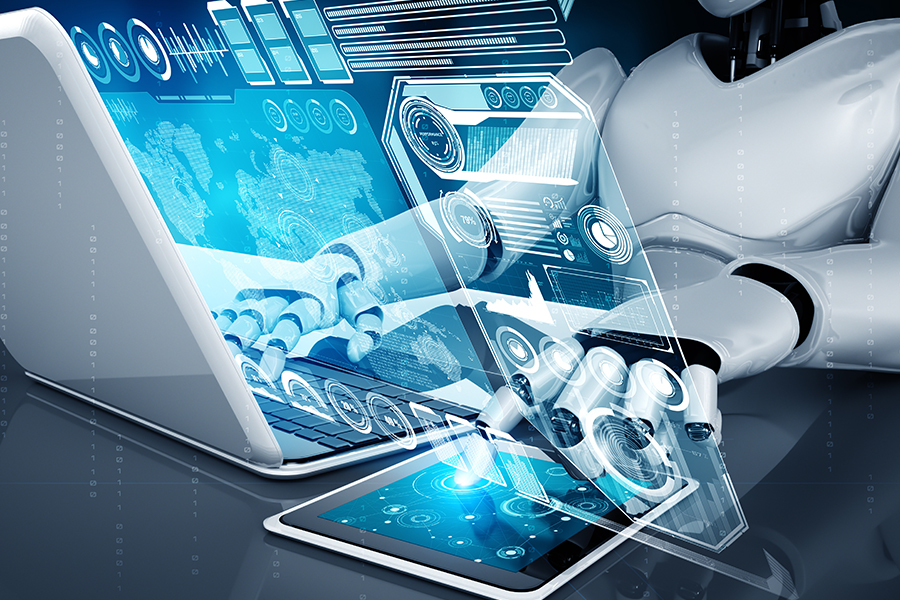Robotic Process Automation (RPA) is undoubtedly a hot topic, offering intriguing promises and capabilities to industries of all colors. It allows organizations to enhance customer service, expedite operational turnaround, increase agility across departments, increase cost savings, and more. When combined with advanced technologies like machine learning (ML), artificial intelligence (AI), and data analytics, automating cognitive tasks is on the horizon. And as of now, RPA is laying the foundation for increased agility, speed, and precision, nudging businesses ever nearer to cognitive automation.
What is Robotic Process Automation (RPA)?
RPA exists to perform mundane or manual tasks more reliably, quickly and repeatedly compared to their human counterparts. It is a proven technology used across various industries – be it finance, retail, manufacturing, insurance, telecom, and beyond. The strength of RPA can be further magnified when combined with the capabilities of emerging technologies such as artificial intelligence, deep learning, machine learning, natural language processing (NLP), and natural language understanding (NLU).
Most importantly, RPA can significantly impact cost savings through error-free, reliable, and accelerated process execution. It operates 24/7 at almost a fraction of the cost of human resources while handling higher workload volumes. It also improves reliability and quality regarding compliance and regulatory requirements by eradicating human error.
RPA can also afford full-time employees to re-focus their work on high-value tasks versus tedious manual processes.

Making Strides in RPA with Cognitive Automation
As companies streamline business processes, there’s a significant opportunity to automate cognitive activities. Cognitive automation is an extension of RPA and a step toward hyper-automation and intelligent automation. The process entails automating judgment or knowledge-based tasks or processes using AI.
In short, the role of cognitive automation is to add an AI layer to automated functions, ensuring that bots can carry out reasoning and knowledge-based tasks more efficiently and effectively.
Combining text analytics with natural language processing makes it possible to translate unstructured data into valuable, well-structured data. From that point, RPA can automate processes and decision-making.
With predictive analytics, bots are enabled to make situational decisions.
Generally, cognitive RPA is very effective when it comes to unstructured data, such as emails and documents, while also using this data to drive automation. As a result, cognitive automation offers incredible potential for data-intensive industries of all kinds.
Cognitive RPA Use Cases
Use Case: Customer Experience
RPA, when coupled with cognition, allows organizations to offer an engaging instant-messaging session to clients and prospects. And as technological advancement continues, this experience becomes increasingly blurred with chatting with a human representative.
Beyond simple text comprehension, voice-enabled bots can be utilized in telephonic conversations, making Interactive Voice Response (IVR) another notable example of RPA improving customer experience. By empowering these systems to comprehend customer intent, interpret any associated unstructured data included, predict customer behavior, and automate decision-making, cognitive automation can monitor and enhance the entire customer journey.
Banking chatbots, for example, are designed to automate the process of opening a new account. Bots can evaluate form data provided by the customer for preliminary approval processing tasks like credit checks, scanning driver’s licenses, extracting ID card data, and more. Likewise, technology takes center stage in driving loan processing initiatives or accelerating back-office processing in the banking & financial services sector.
Use Case: Healthcare
Another use case involves cognitive automation helping healthcare providers expedite the evaluation of diagnostic results and offering insights into the most feasible treatment path.
Given the capabilities of both text and speech processing, the ubiquity of RPA in business will only continue to expand and expand rapidly. To find out how RPA and cognition can help drive your business strategies in the future, Contact Us to begin your journey.




